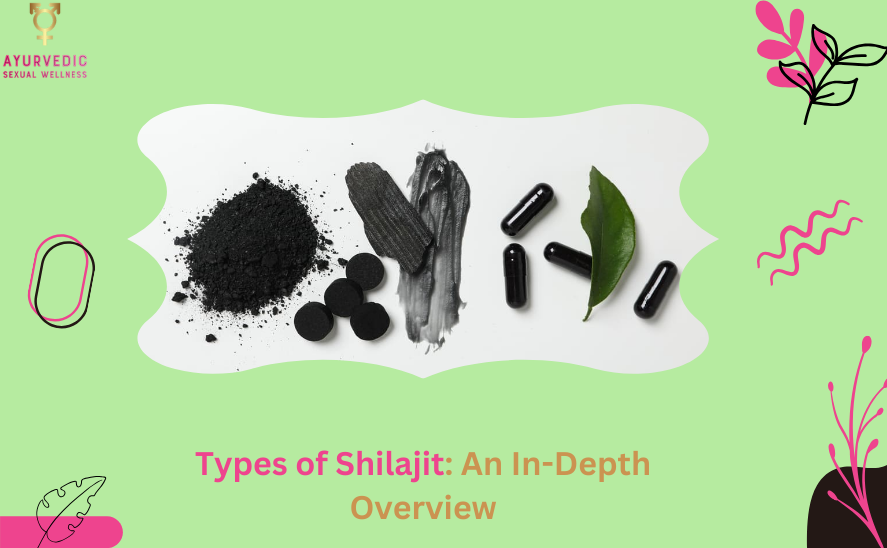Types of Shilajit: An In-Depth Overview
Types of Shilajit a revered substance in traditional medicine, particularly Ayurveda, is known for its remarkable health benefits. Its unique properties stem from its complex formation process, which involves the decomposition of plant matter under specific geological and climatic conditions. As a result, Shilajit can vary in its composition and appearance, leading to different types. Understanding these variations is crucial for choosing the right type for specific health needs. This article explores the various types of Shilajit, focusing on their forms, quality, and usage.
1. Raw Shilajit
Raw Shilajit refers to the substance collected directly from the rock surfaces in its natural state. This form is often sticky and tar-like, with a dark brown to black color. It is typically harvested by scraping it off the rocks where it has oozed out. Types of Shilajit.
- Characteristics: Raw Shilajit is unprocessed and may contain impurities such as dirt, debris, or other natural contaminants. It retains its natural resinous consistency and may have a strong, earthy odor. Types of Shilajit.
- Usage: To use raw Shilajit, it must be purified. This involves dissolving it in water, filtering out impurities, and then concentrating the purified substance. The raw form is often used as a starting material in traditional preparation methods.
2. Purified Shilajit
Purified Shilajit is the result of a processing and purification process designed to remove impurities from the raw Shilajit. This purification ensures that the Shilajit is safe for consumption and free from contaminants.
- Characteristics: After purification, Shilajit may appear as a more refined, semi-solid or powdery substance. The purification process involves dissolving the raw Shilajit in water, filtering it, and then evaporating the water to obtain a concentrated, clean product.
- Usage: Purified Shilajit is commonly used in both traditional medicine and modern supplements. It is considered more suitable for consumption as it is free from contaminants and has a higher concentration of active compounds.
3. Shilajit Resin
Shilajit Resin is a concentrated form of Shilajit, created by processing and drying the purified Shilajit. It is one of the most traditional and widely used forms.
- Characteristics: Shilajit resin is sticky and has a tar-like consistency. It can range in color from dark brown to black and often has a strong, earthy smell. The resin is usually sold in small quantities, often in glass jars or vials. Types of Shilajit.
- Usage: To consume Shilajit resin, a small amount is typically dissolved in warm water, milk, or another liquid. It is known for its potency and effectiveness in delivering the benefits of Shilajit. The resin is a preferred form for those who follow traditional methods of consumption.
4. Shilajit Powder
Shilajit Powder is another common form of Shilajit, created by further processing the purified resin into a fine, dry powder.
- Characteristics: The powder is usually light brown to dark brown in color and has a fine, granular texture. It is easy to dissolve in liquids, making it convenient for various applications. Types of Shilajit.
- Usage: Shilajit powder can be mixed into water, smoothies, or other beverages. It is a versatile form, often used in dietary supplements and health products. The powder form is suitable for those who prefer a more convenient and easily measurable method of consumption.
5. Shilajit Capsules/Tablets
Shilajit Capsules and Tablets are modern forms of Shilajit that offer convenience and precise dosage. These are created by encapsulating Shilajit powder or extracts into capsules or compressing them into tablets.
- Characteristics: Capsules and tablets typically contain standardized amounts of Shilajit, making it easier to control dosage. They are convenient for those who prefer not to handle the raw or powdered forms of Shilajit.
- Usage: Shilajit capsules and tablets are taken as dietary supplements according to the dosage instructions provided. They are ideal for individuals looking for a hassle-free method of incorporating Shilajit into their daily routine. Types of Shilajit.
6. Liquid Shilajit Extract
Liquid Shilajit Extract is a concentrated liquid form of Shilajit, created by extracting the active compounds from Shilajit resin or powder.
- Characteristics: This form is typically a dark, viscous liquid with a strong flavor. It is often sold in dropper bottles, allowing for precise dosing.
- Usage: Liquid Shilajit extract can be mixed into water, juices, or other beverages. It is a potent form that provides quick absorption of the active ingredients. This form is useful for those who prefer a liquid supplement and need flexible dosing.
7. Standardized Shilajit Extracts
Standardized Shilajit Extracts are processed to ensure a consistent concentration of active compounds, such as fulvic acid and humic acid. This standardization process ensures that each batch of Shilajit extract has the same potency. Types of Shilajit.
- Characteristics: These extracts are often available in powder or liquid form and are labeled with specific concentrations of key compounds. This standardization helps in achieving predictable and consistent health benefits.
- Usage: Standardized extracts are used in supplements where precise dosage and potency are crucial. They are often preferred in clinical settings and by individuals who need a specific concentration of active ingredients.
Quality and Authenticity Considerations
When choosing Shilajit, it is important to consider quality and authenticity. Due to its popularity, there are many products on the market, and not all of them are pure or of high quality. Here are some tips for ensuring the authenticity of Shilajit:
- Source: Purchase Shilajit from reputable suppliers or brands known for their quality control and purity.
- Testing: Look for products that have been tested for contaminants and purity. Reliable products often come with certificates of analysis or third-party testing results.
- Appearance: Genuine Shilajit should have a sticky, resinous texture and a dark color. Avoid products that are overly cheap or have an unnatural appearance.
Conclusion of Types of Shilajit:
Types of Shilajit is a versatile and powerful substance with several types that cater to different preferences and needs. From raw and purified Shilajit to various processed forms like resin, powder, capsules, and liquid extracts, each type offers distinct advantages. Understanding these variations helps in selecting the most suitable form for achieving desired health benefits. As with any supplement, ensuring the quality and authenticity of Shilajit is crucial for maximizing its benefits and ensuring safety.



